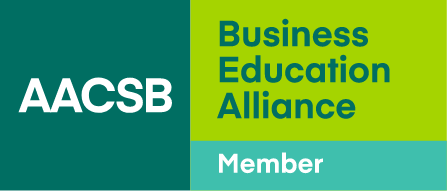6 Content Marketing Tips for Business School Professionals
In a crowded market for graduate management education, business schools need to promote themselves to prospective students more than ever before.
Alongside banner advertising, email blasts, and social media campaigns, schools need to build brand recognition and communicate their distinctive program offering to candidates in a meaningful, credible, and engaging way. To do so, business schools need to invest in content marketing.
According to the Content Marketing Institute, content marketing generates more than three times as many leads as outbound marketing (advertisements) and gets three times the leads-per-dollar spent compared to paid search.
But good content marketing isn’t as simple as hiring a writer and putting a blog post up on your website. Whether it’s written content, video, audio, infographics, or social posts, there are ways to make sure your content successfully supports your student recruitment goals.
Here are six content marketing tips for business schools:
1. Know Your Audience
Before creating your content, you need to think about who your audience is, what they’re interested in, and how your content will serve them. Where is your target audience based? How old are they? What stage of the application process are they at?
More than just stats and figures, you should also consider building audience profiles. What are their personalities, interests, and motivations?
The Graduate Management Admission Council (GMAC) categorizes the prospective student market into seven categories, including Respect Seekers (people who care a lot about a school’s ranking and reputation), Global Strivers (people who ultimately want international careers), and Impactful Innovators (socially minded entrepreneurs).
To resonate the most, the content you create—the subject matter, feel, and tone—should vary depending on the type of audience you want to target.
2. Have Clear Goals
When you launch a content marketing campaign, think about the fundamental reason you’re doing content marketing—it’s usually about building brand awareness and ultimately generating applications to your school. There will also be key themes or ideas you’ll want to promote.
When executing a content campaign, you should repeatedly ask yourself: Is the the content I’m creating directly or indirectly supporting my goals?
You need to know why that video or blog post exists and what you want to achieve with it. How will that piece of content serve your audience? How will it create value for them? Will it be an article that entertains and inspires your audience (for example, an alumni success story)? Will it solve a problem (a video on how to choose between an MBA and a Master’s in Management)? Will it help them in their time of need (a quick guide to visa applications)?
The value the audience receives from your content is what distinguishes content marketing from traditional advertising.
3. Call to Action!
You’ve written a story. It’s up on your site. You can sit back and watch the traffic come in, right? Not quite! Your interaction with your audience should not end after the story itself is completed.
There’s no point in getting 1,000 people to read your article who then just disappear. You need to keep your audience engaged by responding to their comments, suggesting additional content, and, crucially, guiding them on what to do next.
With any piece of content marketing, you need to include an effective call to action—to find out more information about the school, register for a webinar, or download a brochure—with a clear value exchange. You get the candidate’s data; they get something in return.
4. Promote Your Content
Just as important as creating good content is what you do with it afterward—and that needs to be in your mind from the point of creation. Whether you’re sharing your content in newsletters or on social media, think about the audience you’re targeting on those channels to decide which kind of content will work best where.
LinkedIn, for example, is the most popular social media channel among MBA candidates, according to the Association of International Graduate Admissions Consultants (AIGAC), followed by YouTube and Facebook.
Depending on your location in the world, you could also target social sites like Reddit (which has more active users than Twitter and is 70 percent male), Pinterest (where 80 percent of users are female), and Instagram (where almost 90 percent of users are under age 35).
Getting the right kind of content in front of the right audience will help get your brand into the minds of prospective learners.
5. Optimize Your Content
While you would need to keep putting money into something like Google Ads to get results, content marketing stays online and can bring in an audience long after you’ve created it.
However, to ensure your content picks up repeat traffic over time, you’ll need to do some search engine optimization (SEO). Put simply, you’ll need to make sure your content is worded and structured in a way that helps it appear in internet search results for related things.
For example, say you’re writing about the Online MBA. You’ll need to search for the keywords people use the most when searching for that topic. You’ll need to assess the competition: Are there other sites already performing well for that search term? Can you compete with them? You’ll then need to make sure your content includes the target keywords in the right places (title, meta description, and the body of the text, for example).
SEO is not a precise science. Google’s algorithm is constantly changing, and other factors like site speed, mobile optimization, and the quantity and quality of links back to your site are key.
You should dive into the analytics and look at the performance of your content over time. While SEO is tricky, performing well in organic search results on Google and other search engines can help your content go a lot further, for free.
6. Be Distinctive
Business schools all ultimately perform the same function: educating and training the business leaders of the future. It’s tough to be truly different—every school talks about being diverse, international, and impactful. It’s more important to distinctive.
For any content marketing campaign, you should decide on a distinctive area, theme, persona, and tone, and stick to them. If your school wants to be known for its strength in entrepreneurship, for example, you should create and share content on that theme so people will start associating your brand with it.
“Mental availability” is a marketing concept that refers to the probability that a consumer will think of your brand in a buying situation. With content marketing, you can be distinctive and keep your brand top of mind for prospective students when they’re considering business school.






